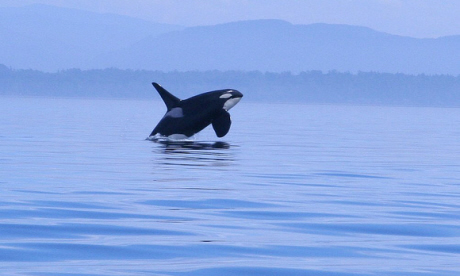
We know that scheduled tours aren't everyone's cup of tea, so here are 10 spots to whale watch without the pressure of being on someone else's time
Stake out whalewatching viewpoints at Cap-de-Bon-Désir, Pointe-Noire and Pointe-des-Monts on the St Lawrence River, where the water is so deep that you needn't leave the shore to catch a glimpse of a spout. Here you can see up to 13 species of large sea mammals, from the massive blue whale to endangered, arctic belugas.
A 12km stretch of low cliffs at Hermanus provides one of the world’s best vantage points for land-based whalewatching. Every year, over 100 Southern Right Whales come here to calve and mate between July and December. However, whales can be seen from this headland year round. The town has a 'whale crier' which lets people know when to head to the coastal paths.
Catch a ferry between Portsmouth and Bilbao or Plymouth and Santander for a chance to spot up to 20 species of cetacean. Sightings here are frequent, with an average trip rewarding passengers' eyes with dolphins, beaked whales and fin whales – the second largest mammal on earth, only beaten by the mighty blue whale. Beware, this trip isn't for the weak stomachs out there as this crossing is considered the roughest around the British Isles.
Once used by whalers, vigias (watchtowers) on islands such as Pico and Faial are now used by researchers and tourists. Whale season here (May October) is dictated by the weather rather than the migration of the whales which means that sightings are more frequent. Sperm and short-finned pilot whales are common in the Azores, while humpbacks and minkes make appearances every now and then.
Humpbacks pass below the cliffs of Cape Byron, June-July on their migration from Antarctica to the Great Barrier Reef. The migration route brings the whales so close to the Byron Bay coast that hopping on a boat to see them is not necessary to get great views.
Inside Passage Ferry journeys north from Vancouver are often accompanied by sightings of orca and humpbacks. Orcas are well known in the waters of British Columbia from July to mid-September. Grey whales are best seen here from late November to March and humpback whales all year round.
Bryde’s whales come close inshore at Ogata from March to October. If you get on a boat to Tosa Bay you'll find yourself in the middle of the Black Current which provides the whales with plenty of food, and you with plenty of 'oohhhs' and 'aahhhs'.
Whale watching: who, what, where and what to spot | Advice... More
Whalewatching in Europe | Destinations... More
Having a whale of a time | Advice... More
Boat trips travel guide | Destinations... More
Whale watching in Canada | Destinations... More